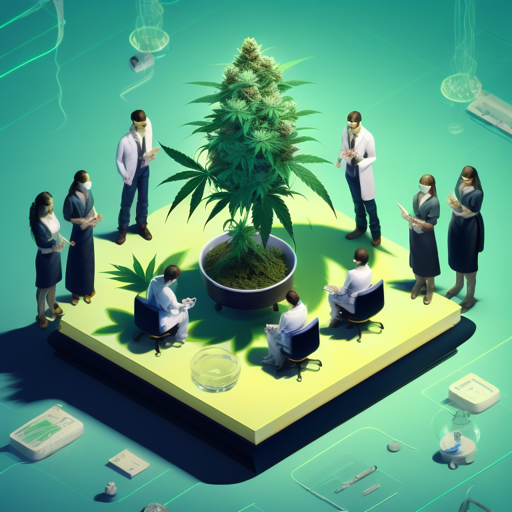Water Activity: A Guide for Medical Cannabis Producers

Introduction As the global demand for medical cannabis continues to surge, the attention to quality control measures becomes increasingly critical. One such parameter gaining prominence in the cannabis industry is water activity (aw). This blog delves into the multifaceted role of water activity, extending beyond its conventional association with edibles and food safety. Specifically, we explore its impact on microbial stability, storage stability of harvested buds and extracts, its correlation to product quality attributes, and its implications for shelf life. Additionally, we discuss its current inclusion in state regulations and emphasise the need for a holistic understanding of water activity in the cannabis industry. The Theory of Water Activity Water activity is not a novel concept but is deeply rooted in the fundamental laws of thermodynamics, as per Gibb’s free energy equation. It represents the relative chemical potential energy of water in a system, measured by the partial vapour pressure of water in a headspace at equilibrium with the sample. This comprehensive understanding helps differentiate water activity from moisture content, with water activity providing a more accurate indication of microbial, chemical, and physical stability in cannabis products. Water Activity and Microbial Safety Microbial contamination poses a significant threat to cannabis products, leading to allergic reactions, respiratory complications, or food borne illnesses. Water activity serves as a critical control point for preventing microbial contamination, dictating the ability of microorganisms to grow and reproduce. While moisture content is an extensive property related to purity, water activity is an intensive property directly influencing microbial growth limits. Establishing water activity below 0.63 aw is crucial for ensuring shelf stability, preventing the growth of pathogenic bacteria and moulds that could compromise product safety. Water Activity and Chemical Stability Water activity is not only a guardian against microbial growth but also a determinant of chemical stability in cannabis products. Processing biomass and edibles to water activities below 0.63 aw mitigates the risk of microbial spoilage but doesn’t guarantee unlimited shelf life. Chemical degradation, such as tetrahydrocannabinolic acid (THCA) loss due to decarboxylation, becomes a pertinent concern. Water activity influences reaction rates, with lower water activity correlating with minimised chemical degradation. The hygrothermal time model is a valuable tool for predicting reaction rates and establishing the ideal water activity range for maximising shelf life while minimising chemical degradation. Water Activity and Storage Stability Harvested cannabis must be adequately dried to facilitate storage and transport. Water activity below 0.63 aw is essential to prevent mould growth, particularly in dried biomass. Adequate packaging, with good moisture barrier properties, becomes imperative to preserve water activity levels during storage and transport. Water Activity and Regulations While water activity is recognised for its role in ensuring the safety and stability of cannabis products, its inclusion in state regulations varies. States like Nevada, California, Oregon, and Washington have incorporated water activity testing requirements into their regulations. Additionally, ASTM standards have been established to standardise water activity testing in the cannabis industry, emphasising its importance in maintaining product quality and safety. Conclusion In the dynamic landscape of the medical cannabis industry, water activity emerges as a versatile and indispensable parameter. Its influence extends from microbial safety to chemical stability, storage stability, and overall product quality. For medical cannabis producers eyeing the UK market, understanding and controlling water activity is not just a standard to maintain but a strategic move to ensure the longevity, safety, and efficacy of their products. As the industry continues to evolve, embracing the multifaceted significance of water activity will undoubtedly set exporters apart, fostering a reputation for excellence and reliability in the global market. References D.S. Reid, Water Activity in Foods (Blackwell Publishing and the Institute of Food Technologists, Ames, Iowa, 2007) pp. 15–28. A.J. Fontana, Water Activity in Foods (Blackwell Publishing and the Institute of Food Technologists, Ames, Iowa, 2007) pp. 155–171. M.S. Tapia, S.M. Alzamora, and J. Chirife, Water Activity in Foods (Blackwell Publishing and the Institute of Food Technologists, Ames, Iowa, 2007) pp. 239–271. L. Beuchat, J. Food Prot.46(2), 135–141 (1983). W. Scott, Adv. Food Res.7,83–127 (1957). National Cannabis Industry Association. https://thecannabisindustry.org/ncia-news-resources/state-by-state-policies/. (June 2019). H. Lueng, Water Activity: Theory and Applications to Food (Marcel Dekker, Inc., New York, New York, 1987) pp. 27–45. B.P Carter, R.M. Syamaladevi, M.T. Galloway, G.S. Campbell, and S.S. Sablani, Proceedings for the 8th Shelf Life International Meeting, U. Klinkesorn, Ed. (Bangkok, Thailand: Kasetsart University, 2017) pp. 40–45. H. Eyring, J. Chem. Phys.4, 283 (1936). The What, How, and Why of Water Activity in Cannabis. https://www.cannabissciencetech.com/view/what-how-and-why-water-activity-cannabis/ (December 2023). Water Activity And Cannabis. https://aqualab.com/en/knowledge-base/webinars/water-activity-and-cannabis/ (December 2023),
